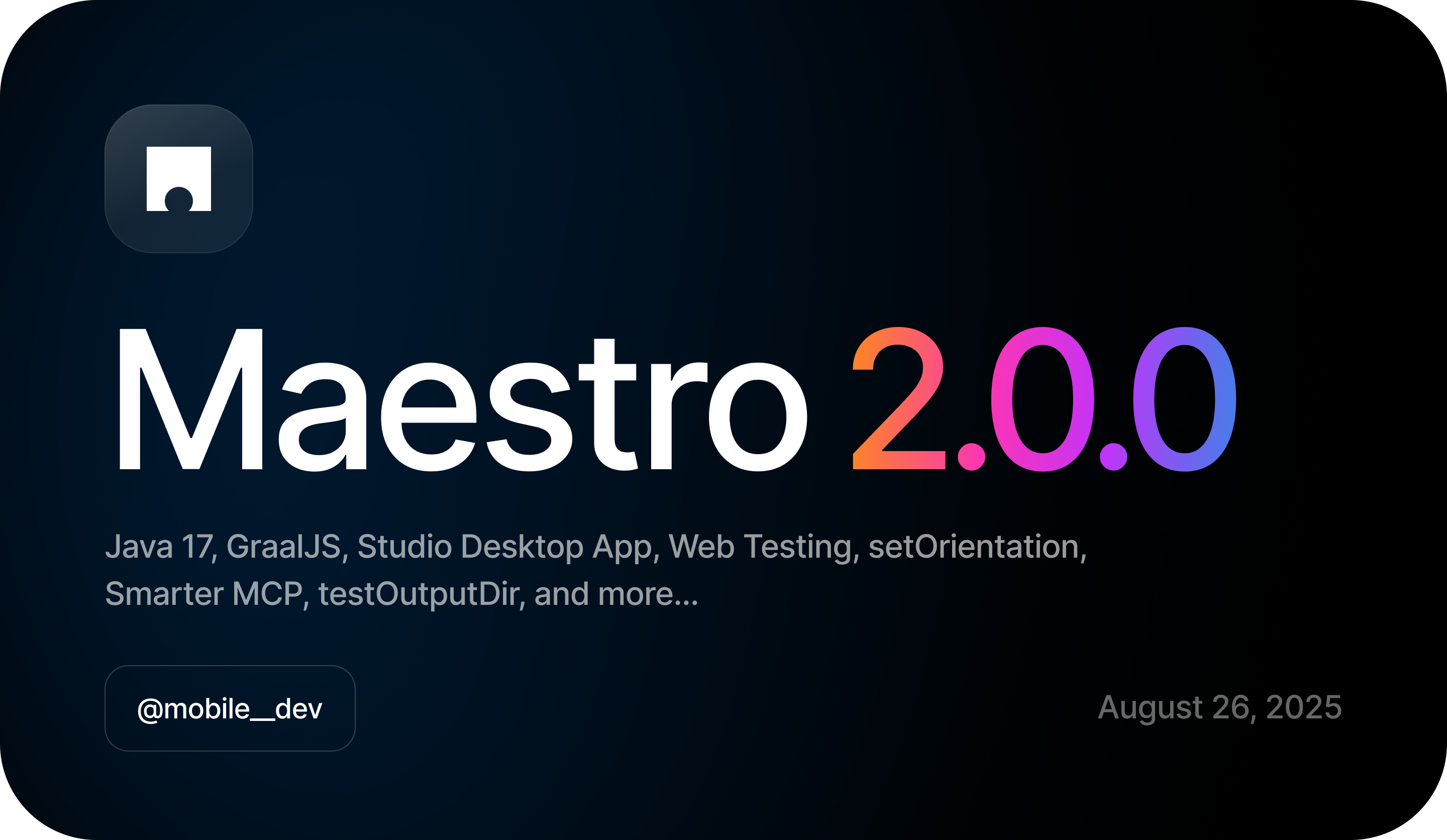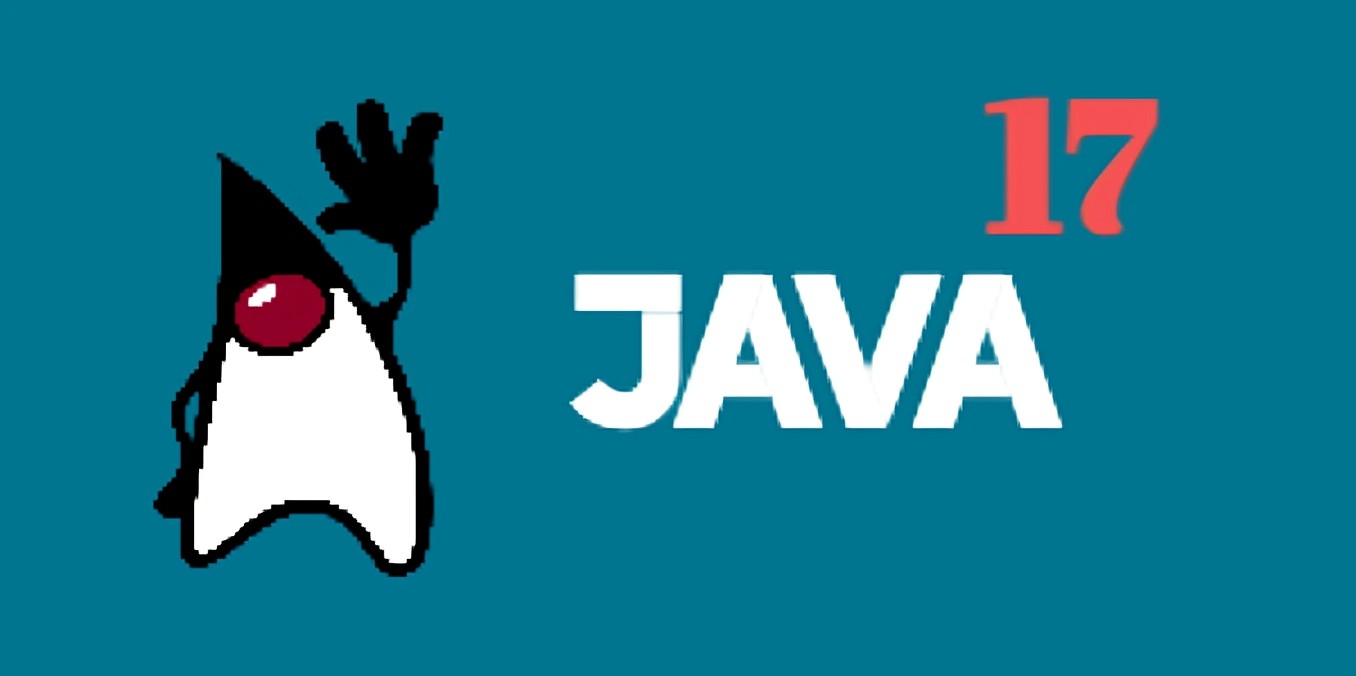"Why is it called 2.0? "Isn't this just another release?"
Not exactly.
But to understand why Maestro 2.0 is such a major thing, we need to go back to the beginning.
"Why is it called 2.0? "Isn't this just another release?"
Not exactly.
But to understand why Maestro 2.0 is such a major thing, we need to go back to the beginning.
When Maestro first launched, the mobile testing landscape was broken. Teams were trapped between two bad options: clunky UI automation tools that required endless maintenance, or writing brittle code-based tests that broke with every UI change.
The problem was clear: Mobile teams needed a testing solution that was both powerful enough for complex scenarios and simple enough that anyone could write and maintain their tests. They needed something that could adapt to fast-moving projects instead of slowing them down.
Maestro's mission was born from this frustration: Create a testing framework that feels natural to write, runs reliably across devices, and actually helps teams ship better apps faster.
And it worked. Maestro was adopted by thousands of teams because it solved real problems:
But as Maestro grew, so did the ambitions of the teams using it. In addition to mobile apps, they wanted to test web applications. They required more advanced capabilities, and more modern tooling.
The foundation that got us here wasn't going to take us where we needed to go.
Therefore, we focused on updating the foundation that prevented us from moving forward, which now enables us to build features that were not possible before.
Consider this release as Maestro getting ready for the next step.

Before you upgrade:
jsEngine: rhino .“Why is updating Java such a big deal? Up until now, I've been managing Maestro well!”
Java 17 removes the technical barriers that were holding Maestro back. This modern foundation unlocks features that older Java versions simply can't support.
It's more like upgrading your foundation so we can build you a better home for you.

⚠️ Heads-up: Before using Maestro 2.0.0, update to Java 17+ if you're using Java 16 or below.
"Wait… JavaScript engine? I didn't even know Maestro had one!"
Sure, it does. Up until now, Rhino, a JavaScript engine that stopped evolving years ago, was in charge of it. Teams constantly hit walls: modern JavaScript syntax didn't work and debugging was a nightmare.
The adoption of GraalJS was made possible by Java 17, and it is now the default engine in Maestro 2.0.0.
The problems Rhino created:
GraalJS changes everything:
Here's what's now possible:
# Modern JavaScript that actually works
- inputText: ${user?.name ?? 'Anonymous'}
- assertVisible: ${items.filter(item => item.active).length > 0 ? 'Active Items' : 'No Items'}
If you need the old engine for legacy scripts, you can still switch back:
appId: com.example.app
jsEngine: rhino
📚 Curious about the differences? Read the GraalJS behavior guide →
"Why is it so difficult to create tests? Why do I have to keep switching between the emulator, studio web and code editor?"
This highlighted a bigger issue: Writing Maestro tests had an unnecessary learning curve, and the constant context switching between tools made building, maintaining, and debugging tests frustrating and inefficient.
Write, maintain, and debug your tests at a single using Maestro Studio Desktop, where test development becomes intuitive. Test generation is no longer a technical challenge. Maestro Studio Desktop makes it a simple, visually appealing & intuitive process that team members with and without technical expertise can use efficiently.
The Desktop app is currently in beta. If you are looking to simplify your testing workflow, do give it a try! We'll love to get your feedbacks and improve Studio Desktop. Download Maestro Studio Desktop - Beta →
Web testing support has been our most requested feature, with users asking: "When will Maestro support web testing?"
The wait is over. We're excited to introduce web testing capabilities as our first step into expanding beyond mobile.
What's new:
1. Run Multiple Web Flows with one command
“Mobile flows could always run together… but web?”
Now, yes. With Maestro 2.0, you can run your entire web workspace in a single command:
# You can now run entire web workspaces
maestro test workspace_containing_multiple_web_flows
2. Clearer Web Flow Configuration:
“Why is Maestro thinking my web test belongs to some random app?”
That’s what can happen when you define a web flow using appId, sometimes it guesses wrong.Web flows now explicitly require to use url instead of the confusing appId field.
url: https://maestro.mobile.dev
---
- launchApp
- assertVisible: "Welcome to Maestro"
⚠️ Still using appId in your web flows? Time to switch to url
Web testing in Maestro is currently at its early stages. While the core functionality works, we're still optimizing and expanding capabilities. We will be learning from early adopters and continuously improving the experience.
If you're interested in web testing, we'd love your feedback and continue to improve Maestro for web Testing as well.
setOrientation"Ever had to rotate your device mid-test just to see if the UI breaks?"
This seemingly simple problem highlighted a bigger issue: Maestro couldn't adapt to how real users actually interact with apps. Users rotate their devices constantly, but tests were locked to a single orientation.
You now get complete orientation control within your tests
appId: com.example.maestro.orientation
---
- launchApp
- setOrientation: LANDSCAPE_LEFT
- assertVisible: "Landscape Layout"
- setOrientation: PORTRAIT
- assertVisible: "Portrait Layout"
Supports:
PORTRAITUPSIDE_DOWNLANDSCAPE_LEFTLANDSCAPE_RIGHTExample:
appId: com.example.maestro.orientation
---
- launchApp
- setOrientation: LANDSCAPE_LEFT
Now you can catch those orientation dependent layout issues before your users do. Documentation for setOrientation →
MCP brings AI-powered testing that could understand your app, understand your test scenarios, look at the screens and accordingly generate meaningful test.
The change in 2.0:
run_flow and run_flow_files now handle environment variables and hooks just like your regular flows.With these changes, MCP runs are cleaner, faster, and far more predictable. How to set it up →
"Where did that screenshot go? Wait… where are the logs?!"
When tests failed in CI, teams often spent extra minutes searching for the right screenshot or log file after a failed test. While not a critical blocker, it was still a distraction.
The solution: Complete control over your test output. Pick where screenshots, logs and AI reports go with testOutputDir or --test-output-dir. How to set it up →
# In config.yaml
testOutputDir: your_maestro_output_directory
# Or via CLI
maestro test workspace --test-output-dir=your_maestro_output_directory
A couple of smaller changes that still make a big difference:
runFlow commands.maestro cloud command when uploading files that have external dependencias (subflows, scripts and media)Check Java version
java -version
Install or switch to Java 17
Update Maestro to 2.0.0
If you used Rhino-specific JS, either update scripts or set jsEngine: rhino temporarily
Recently, a Maestro team informed us of their "JavaScript incident." After months of successfully running tests, they made the decision to update their test logic using some ES2020 features. Suddenly, half their flows were failing with cryptic Rhino errors. After hours of debugging, they discovered that the engine was the problem, not their reasoning.
That's exactly the kind of friction we are expecting to eliminate. You shouldn't have to think about whether your testing framework can handle modern JavaScript. You shouldn't waste time hunting for screenshots when a test fails. You shouldn't need separate tools for web and mobile testing.
Maestro 2.0 is the beginning for fixing such issues. The JavaScript engine that couldn't keep up? Replaced. The Java runtime hitting feature limits? Upgraded. The AI tools giving inconsistent results? Improved.
Sometimes the most important releases are the ones that simply remove the friction you didn't realize was there.
We're entering a new era of software development. Advancements in AI and tooling have unlocked unprecedented speed, shifting the bottleneck from development velocity to quality control. This is why we built — a modern testing platform that ensures your team can move quickly while maintaining a high standard of quality.
Learn more ->